The first thing you notice is just how quiet it is. When we first arrived, there was just one other vehicle charging (a BMW i3), but during our time at the UK's first electric forecourt more electric cars turned up - although if you weren't paying attention, you wouldn't necessarily know it.
The fully electric and plug-in hybrid vehicles float around the station, with just a faint noise of low-speed rubber on tarmac the only audible indicator that you're not alone.
This is the Gridserve Electric Forecourt, which uses 100% renewable energy to provide all its power. A 24 bay-strong fast charging station of electric vehicles. There are additional Tesla superchargers on top of the main 24 bays, plus a handful of slower chargers too.
- Renault Zoe: a zippy electric car made for the city
- Hyundai Kona Electric: an EV that will keep the family entertained
- Audi e-tron: driving the first all-electric Audi
It's the first of its kind in the UK, but the firm behind it has grand plans to roll out 100 forecourts across the UK over the next five years, with York and Hull already planned after it built solar farms in both areas.
That rollout can't come soon enough, as fully electric and plug-in hybrid drivers will attest. The electric car charging network in the UK is still far behind that of 8,000+ petrol stations.
What's more, the location of Gridserve's first forecourt is a little peculiar. Rather than opting for a spot on the M25, M1 or another major route, it instead decided to set up shop on the A131 just outside Braintree, Essex.
In terms of convenience then, the location isn't one that many long-distance drivers are likely to pass, but as a proving ground for the concept there appears to be just about enough trade to test it out.
So what's it actually like? We jumped in the fully electric Audi e-tron Sportback, ran it around until we had just 30 miles of range left and headed to the forecourt for a top-up.
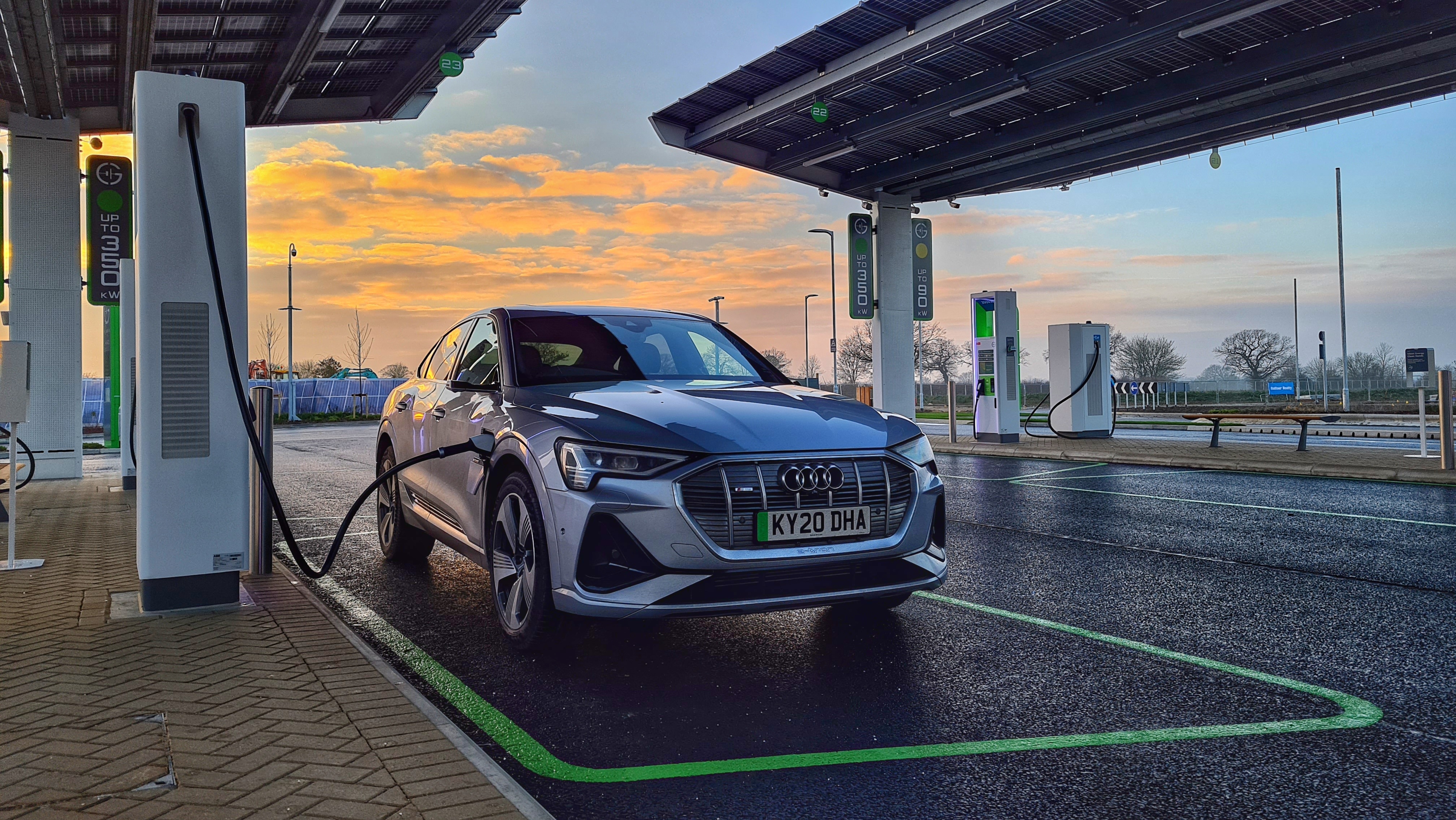
First impressions: green, clean and quiet
The electric forecourt had only been open a month when we visited, and with various restrictions to movement due to the pandemic, likely hadn't yet experienced a 'normal' volume of visitors.
As we mentioned, things were pretty quiet when we arrived with just one other car in a bay. We followed the one-way system round to the main charger bays - passing the Tesla Superchargers and a handful of slower chargers on the way.
While we had the pick of 23 empty bays, when traffic levels return to normal and an increasing number of electric vehicles hit the road, these forecourts could well develop lengthy queues as charging can take an hour or more, depending on the car and the charge type.
Of the 24 bays on the main forecourt, the outer 12 offer charging speeds of up to 90kW, while the central 12 come equipped with superfast, up to 350kW chargers to get you topped up much quicker.
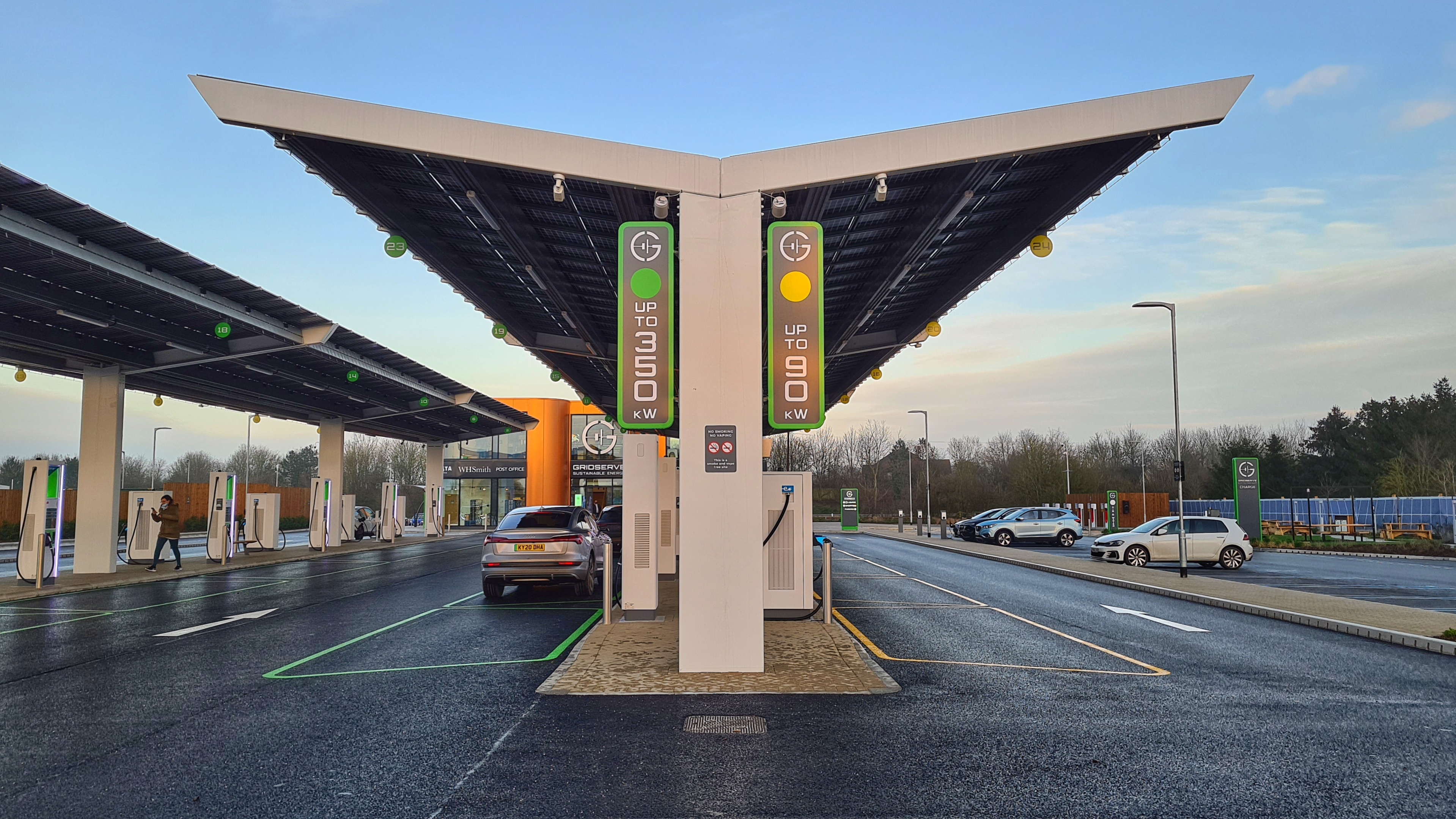
The canopy over the charging bays to keep you protected from the elements is covered in solar panels, and there are more panels around most of the perimeter of the complex - providing 100% of the power to forecourt.
There's a small grass area too, with picnic benches, which will provide a pleasant - quiet and emission free - alfresco dining area for those passing the time while their cars recharge. Less welcoming in the middle of winter when we visited, however.
It's not just a forecourt of chargers however, as the concession building boasts a coffee shop, mini supermarket, post office, toilets and upstairs seating area - again providing alternative accommodation to your car seats while you wait for the electricity to flow into your batteries.
While our low-footfall visits made this space easy to navigate, we wonder whether things will get a little tighter when the forecourt is at full capacity as it doesn't feel the roomiest of places.
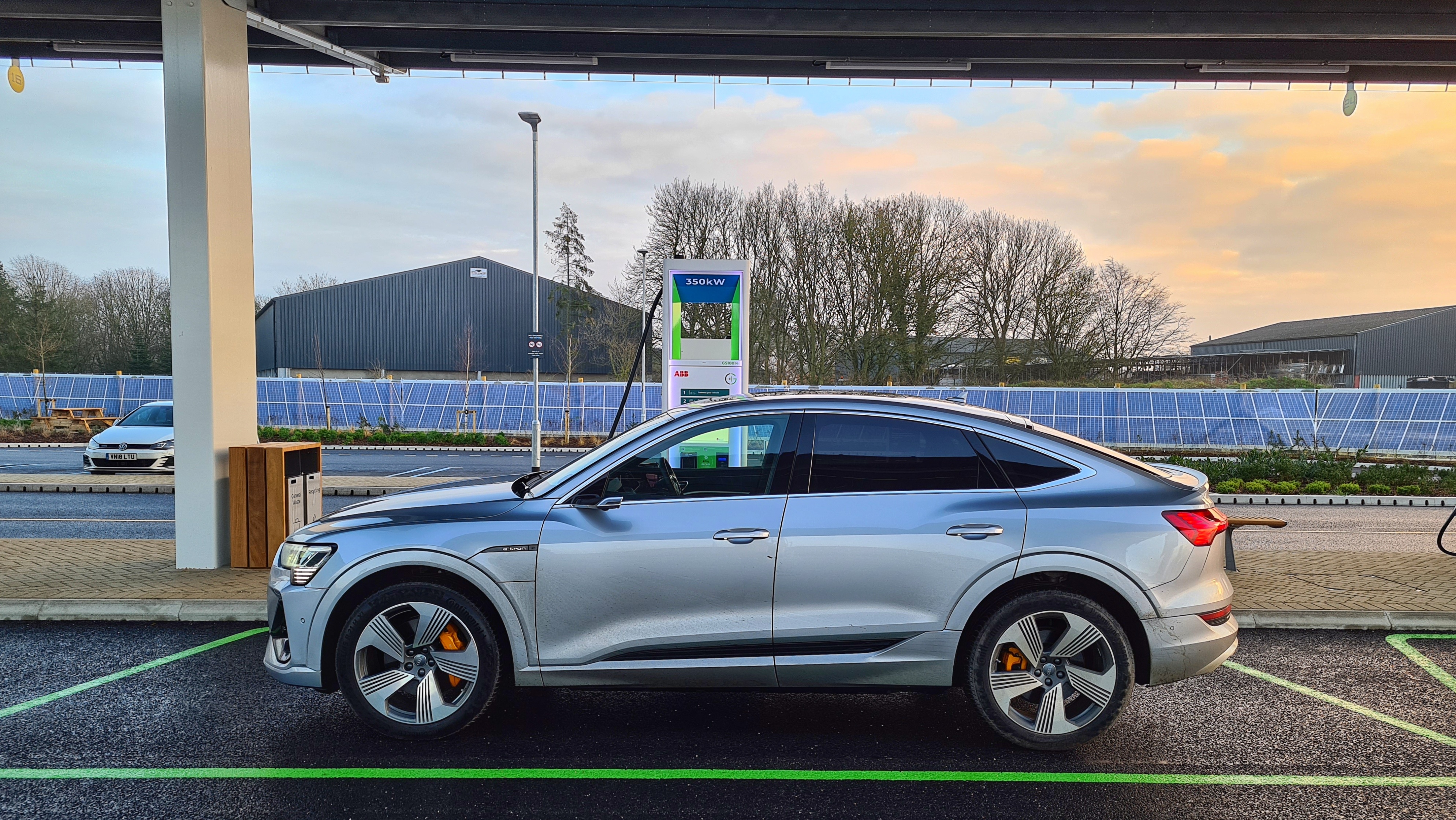
Charge me up
We charged
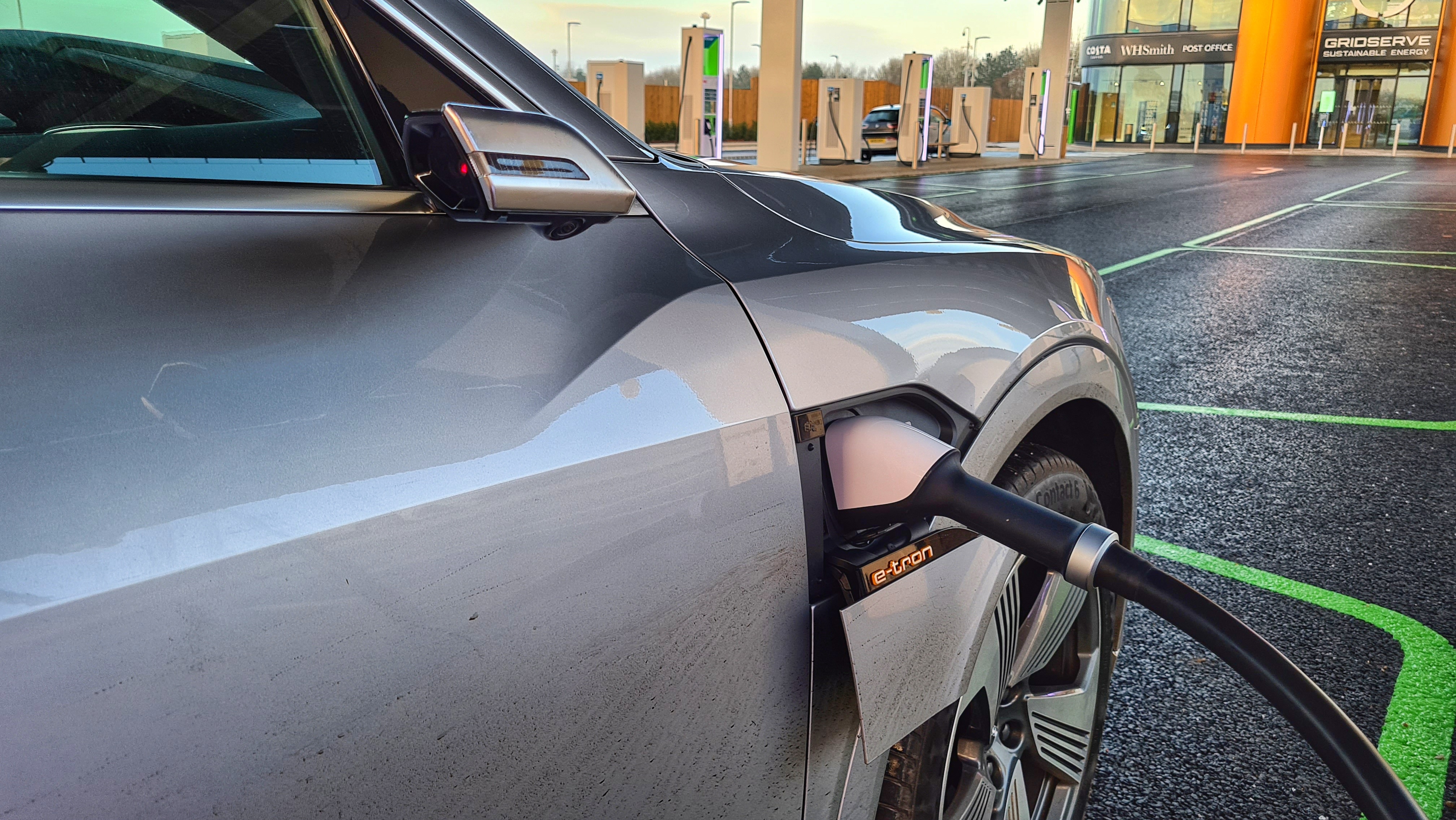
Audi e-tron Sportback 55
Top Speed: 124 mph (limited)
0-62mph: 6.6 seconds
Range: up to 240 miles
Price: £89,470
We opted for the 350kW charger for the fastest possible top-up time for our e-tron Sportback, although you're not guaranteed faster recharging on these chargers versus the 90kW ones.
That's because fully electric and plug-in hybrid vehicles have different maximum charging speeds, so if your car only supports up to 90kW charging, you won't top up your battery any quicker by connecting it to a 350kW outlet.
Our Audi e-tron Sportback gave us an indication of the charging speed on its digital cluster display, and we peaked at around 150kW. That’s pretty speedy in today’s electric car market, but future EVs will come with support for even faster charging, and that’s when the 350kW chargers will come into their own.
We witnessed around 125 miles added to the e-tron Sportback in 30 minutes of charging, and returning the car to 100% (around 180 miles of range) took just under 50 minutes.
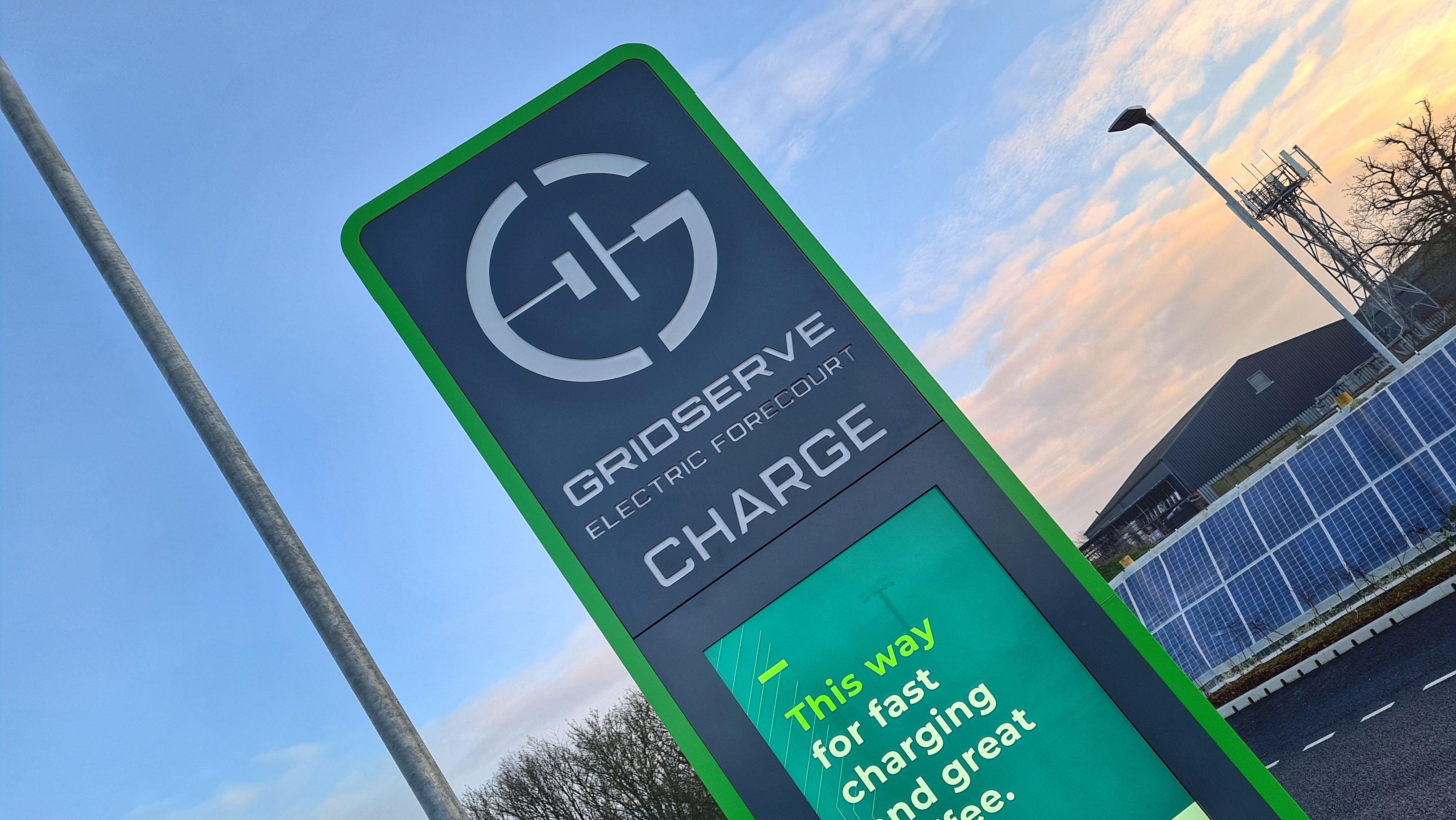
The charge cost us £18, which is slightly cheaper than petrol - but the expectation is costs for recharging will come down further in the future.
What remains to be seen is how electric forecourts cope when they reach maximum capacity. How long will folks have to wait for an available bay? Will there be enough space to queue? Is the convenience building big enough?
As for a first trip, we were impressed with the cleanliness, the quiet and the offering of superfast-charging, even if the car we were driving didn't support the maximum speeds - and it gives us a glimpse of what's to come in the future.

- John McCann is getting behind the wheel to give you an alternative look at the wealth of cars – and the tech inside them – available today. From super-fast sports cars to tech-packed hatchbacks, he'll take you through a range of makes, models, power and price tags in his regular TR Drives column.
from TechRadar - All the latest technology news https://ift.tt/3a6Pd0T


